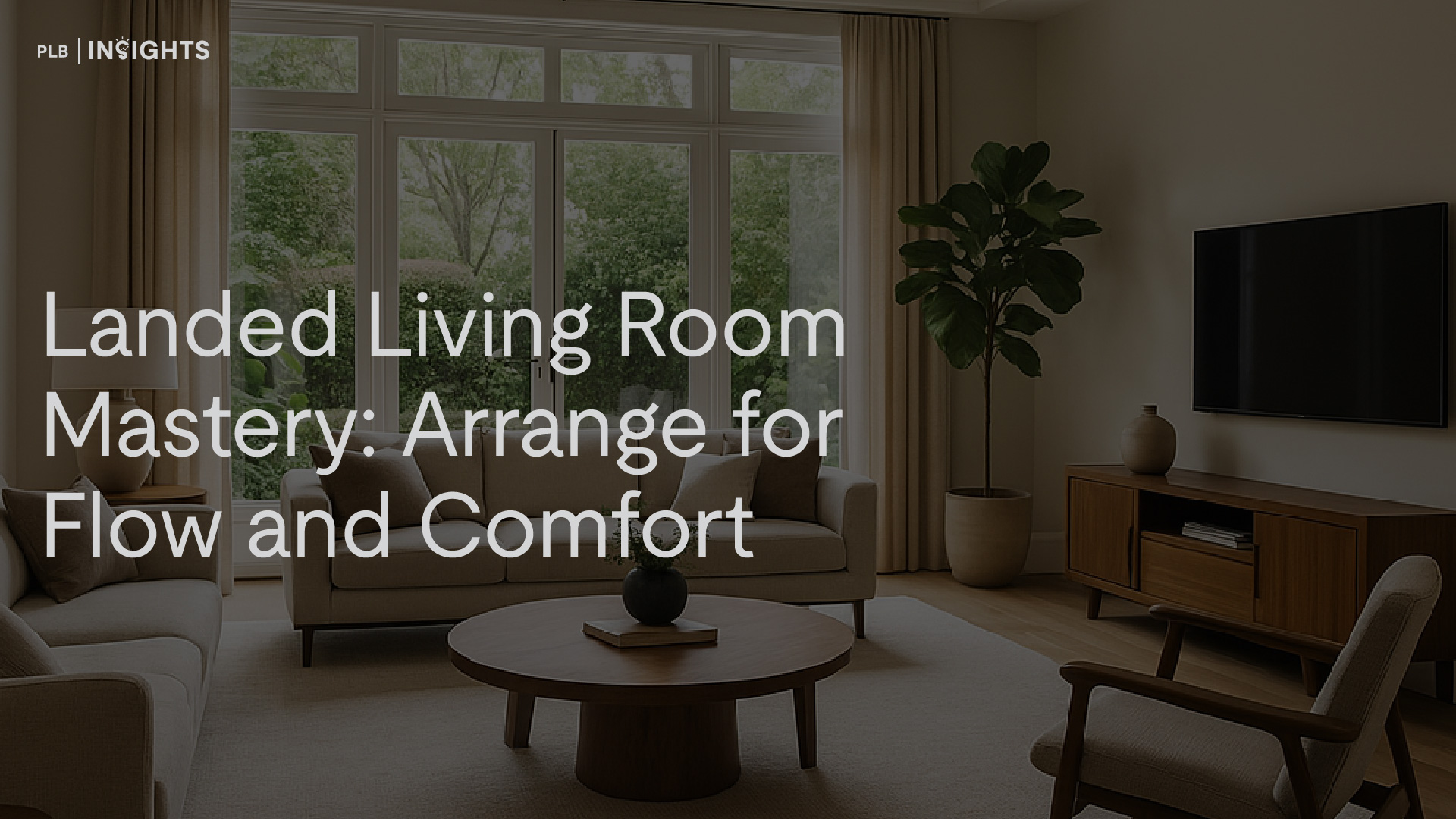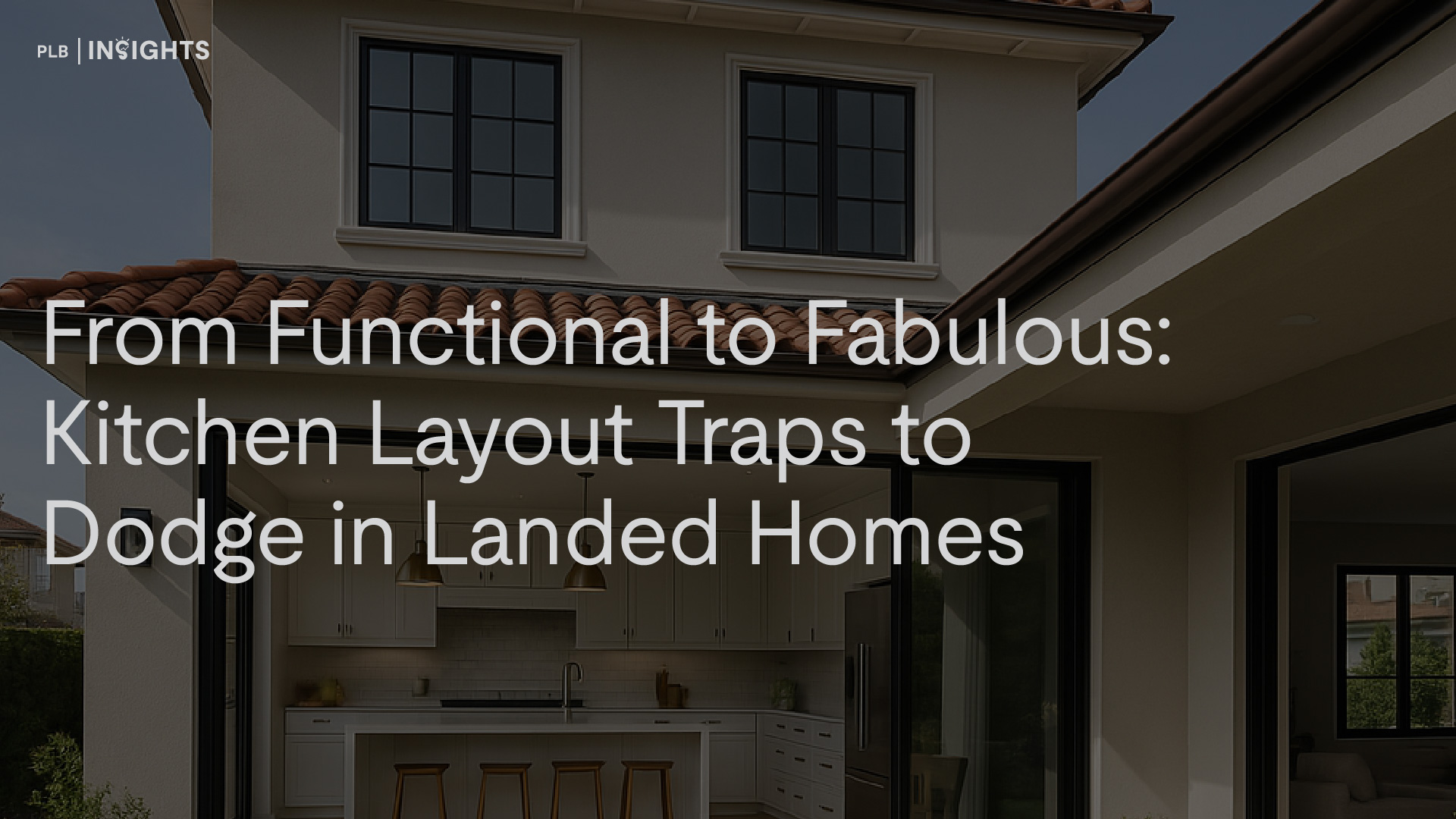
In our previous PLB Insights articles for sustainability, you may have heard us mention ventilation and airflow time and time again and how that is important for natural ventilation to save energy costs on the A/C. Today, we will be mainly focusing on air wells – going in-depth into what they do exactly for homes!
Before you say the famous Chinese phrasing that goes “心静自然凉”, which in English means to “be calm and you will naturally feel cool and comfortable”, it is not the theme that we will be going for today. Instead, we will be talking about the science of it all — How air wells in your home can help perform the job of natural ventilation better and in turn, cool down both your A/C naturally and your monthly utility bills.
Be it a landed home or any other residential type of environment, space and unblocked entities are vital in encouraging the natural circulation of air. Sometimes, the reason why you feel like you are living in a sauna is because of the fact that there is a wall or fixture in place that is obstructing the natural ventilation system. However, for landed properties, it is understandable since they are built so close to the ground, it can get hot sometimes because of the thermal heat radiation from the ground.
How is it like today
We live in a country that is not blessed with the longevity of space and it is becoming a bigger concern for the nation as our viable land area gets depleted. Our citizens are constantly turning towards ideas that would emulate the feeling of expanse and volume in their homes. This is where the part on interior design comes into play. If you are on track with the latest interior design trends, you should be aware that the most common theme that people are going for these days is the broad design terms such as modern, minimalistic and sleek interior design. These terminologies usually imply design that is clean with poise and more commonly termed as “modern luxe”, instead of something more of character ( e.g. industrial theme. )
In tropical countries like Singapore, dehumidifiers and climate cooling devices such as our trusty air conditioners are used (and sometimes too much) to deter against the extreme conditions of heat and humidity on top of what the design of our home can do. Without such appliances, the air in your home turns stale and musty easily. One tip is to always have your windows open as it frees up the trapped particles and promotes air propagation.
In today’s context, everyone is constantly chasing after high ceilings as it has become an unsaid status of privilege and wealth since it is not something that is widely seen in apartment complexes apart from the units on the mezzanine levels and that makes it highly exclusive. Some buyers are sold to such an idea and “luxury”, given that high ceilings can help to make small rooms feel generous and grand.
This is perfect for landed homes because you have the freedom and opportunity to alter the physical spaces of your home to potentially bring out extremely high ceilings. And how else can you install this void of space with high ceilings than creating a natural air well in the heart of your home! It’s not only aesthetically pleasing but also a functional concept.
Exterior Air Wells
However, before the normalcy of our A/C and dehumidifiers, was the era of natural cooling and ventilation. Previously, architects adopted a more egalitarian approach to the design of homes and not to mention, the practicality of a space — does it allow natural wind into your premises? Architects are once again bringing back this concept due to popular demand, getting rid of walls (oh, how metaphorical) to encourage cross ventilation. Mostly, consumers do not look at it from the viewpoint of how it provides good air circulation but instead, for a more aesthetic purpose.

How an exterior air well looks like Courtesy LookBox Living
Traditionally, air wells tend to be built in the centre of the home, where it forms a square boundary to allow owners to plant their whims of verdure to receive the natural light and rainwater sources. This part of the home is usually not a part of the home interior but of a pocket of space that when opened up, breathes the air of the outside environment. What we are preaching for instead, is not building doors that open out into nature within your home but more of what you can build around for the interior of your home, for the benefit of yourself.
Interior Air Wells

What an interior air well can look like in your home courtesy Home and Decor
Interior air wells are created by introducing a void space which spans a few levels high, with an insulated skylight window at the roof, bringing copious sunlight into the interiors. While the initial belief is that of wasted space; no purpose in having an air well in a landed home because it is already big enough and rather, it can potentially be converted to additional room(s). This is also commonly heard in condominiums with strata spaces in their penthouse units, which is why many would choose to repurpose such a void area into a loft living space.
But we’d like to think otherwise; that there’s beauty in void areas, naturally uplifting both in creature comfort and mental enrichment. Let us share a little more about what benefits come with an air well in your home.

Good ventilation system
A good ventilation system dispels the build-up of pollutants, bacteria, moisture and unpleasant odours, such as body odour and other scents that inevitably gather within your premises. So unless there is a driver of strong air passageways in your home, there is technically no solution or control over the air flow and the types of pollutants that will be present. An air well presents the architectural solution, and although it will not promise that bacteria will be completely rid of, it does make a difference. Pollutants can’t be helped, but the creation of more space for them to flow out discourages the stagnancy within the home.
A double-glazed window is usually installed at the roof of the air well, and the inside pane aids to absorb heat that has gathered in the space, transmitting the heat to the cooler outside pane. Sometimes it can also be installed on the side walls of the air well. This improves air circulation and indirectly bolster energy saving costs with the natural wind that will be flowing through the entire house. We shall now go a little more into scientific explanations. Hot air generally rises as such molecules are less dense and active, so given a huge void space, the hot air that has been circulating within the home radius will abide by the law of physics and rise above to give way to cooler, denser and more tame air molecules at the bottom of the void. This is also known as the stack ventilation effect.

Graphic showing how the convection process work through air well ventilation courtesy Hortidaily
One tip is to place a water fixture directly under the air well. By doing so, you may just see a huge difference in the flow of natural wind throughout the home because the water fixture will also encourage air flow, thereby cooling your home.
You can also read our article on how else to make your home more sustainable and even carbon-negative here.
Psychological aspects of Air Wells
With an air well, given that there is a higher air space, this will also provide a psychological cooling effect for occupants and reduce the discomfort caused by the subjective feeling of skin wetness due to the humidity. It is the fastest and easiest way of promoting air circulation. Air wells also act as a form of ventilation system, as mentioned above, and because it helps to generate cleaner and fresher air in your home, psychologically speaking, your moods get lifted as well. Psychological and toxic effects given the presence of excessive amounts of pollutants in the atmosphere can lead to psychiatric symptoms, including anxiety, changes in mood and cognitive behaviour.
Not to mention also, that an air well can create an illusion of a bigger space. Because relative to the size and height of the occupant, the air well is much taller than that. As they always say, the bigger the better.
Living wall

Incorporating a vertical living wall in an air well courtesy Greenturf Asia
Another aspect that usually goes well with air wells would be living walls. Given that the skylight windows that are installed at the roof provide an excellent source of daylight for the home, what other better way than to install a vertical living wall on the side of the air well?
This is exactly what has been done by multiple eco-centric homeowners. We are also not going to disregard the fact that a living wall has its own set of benefits, which we have mentioned in detail in our article here. So a combination of an air well and a living wall will bring extra benefits for homeowners who are also looking at greening their home even further, and this will definitely leave your visitors in awe!
Natural light
Lastly, the amount of natural light (or skylight) that an air well can bring into your home is incredible. Promise us when we say this but on a good day, you probably will not even need to turn on any lights in your home, at least, in the daytime.

Air well in a home courtesy BluPrint
Although there are many houses out there that have such a feature, here is one more detailed home tour video that PropertyLimBrothers have done to show you just how much of a difference an air well can make.
Conclusion
Just by opening up a space and hacking down some walls, you are also freeing up the stuffiness and congregation of air particles within and encouraging the interconnection of such molecules and their movement. And it works, just like how you feel much cooler after stepping out of your home, because there is just so much more surface area for air to flow through and around.
Most landed homes have the possibilities to do such interior alterations, which is a luxury of space that many others do not get to enjoy. The creation of any form of intellectual void space in your home to allow natural air flow can and will make a difference. We hope that we have expanded your horizons on how you view air wells and that this article has been useful in highlighting some insights about its benefits and usage. Stay tuned for the next PLB Insights article!








